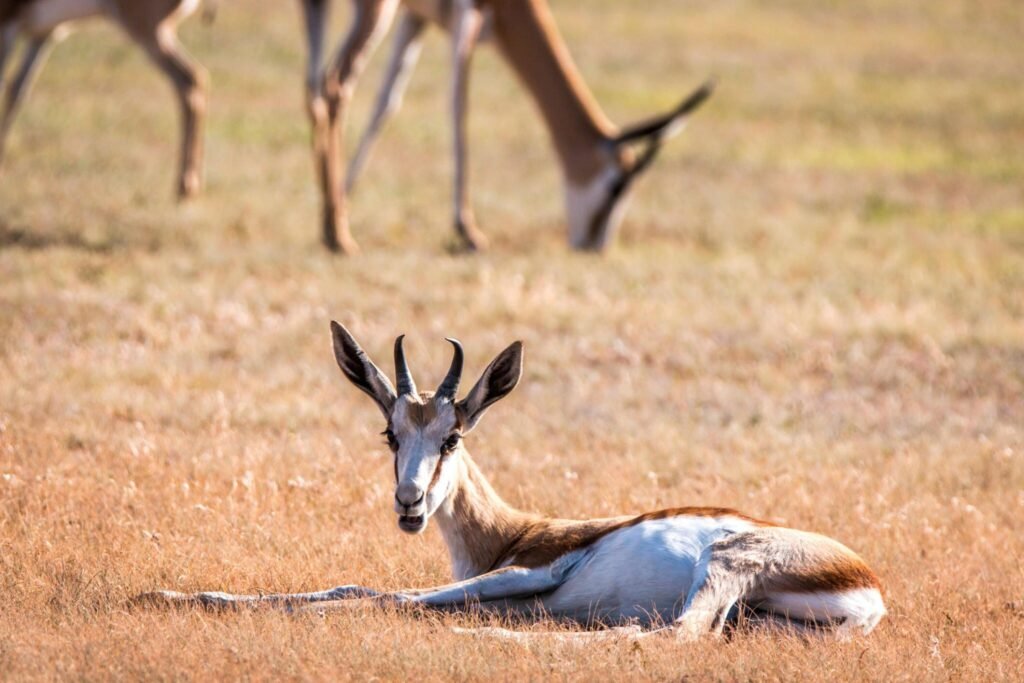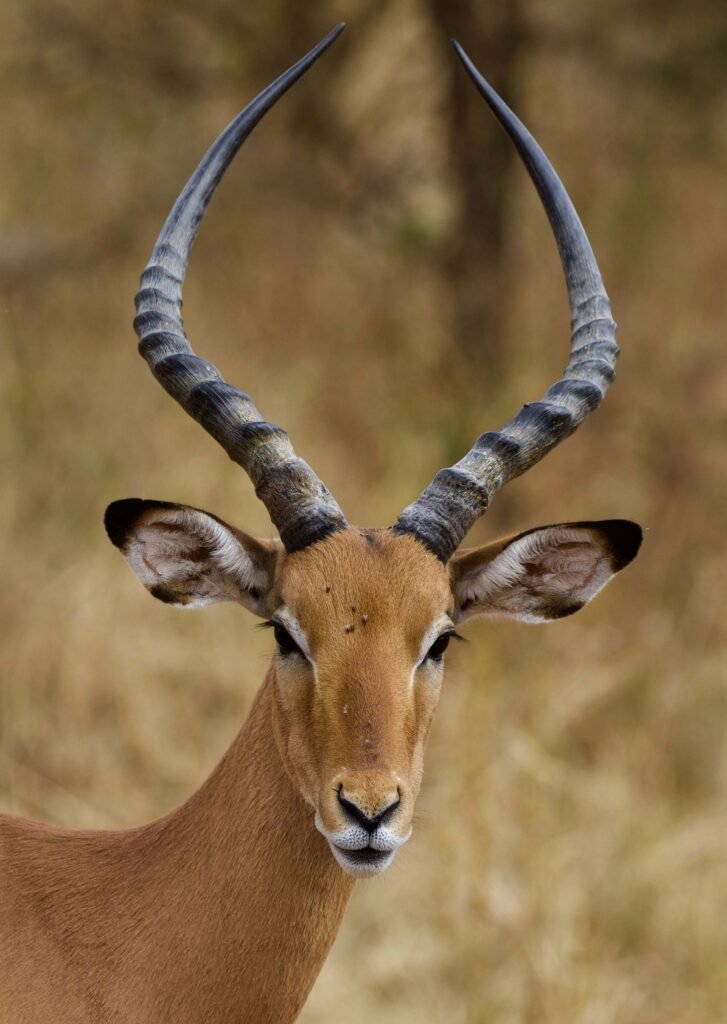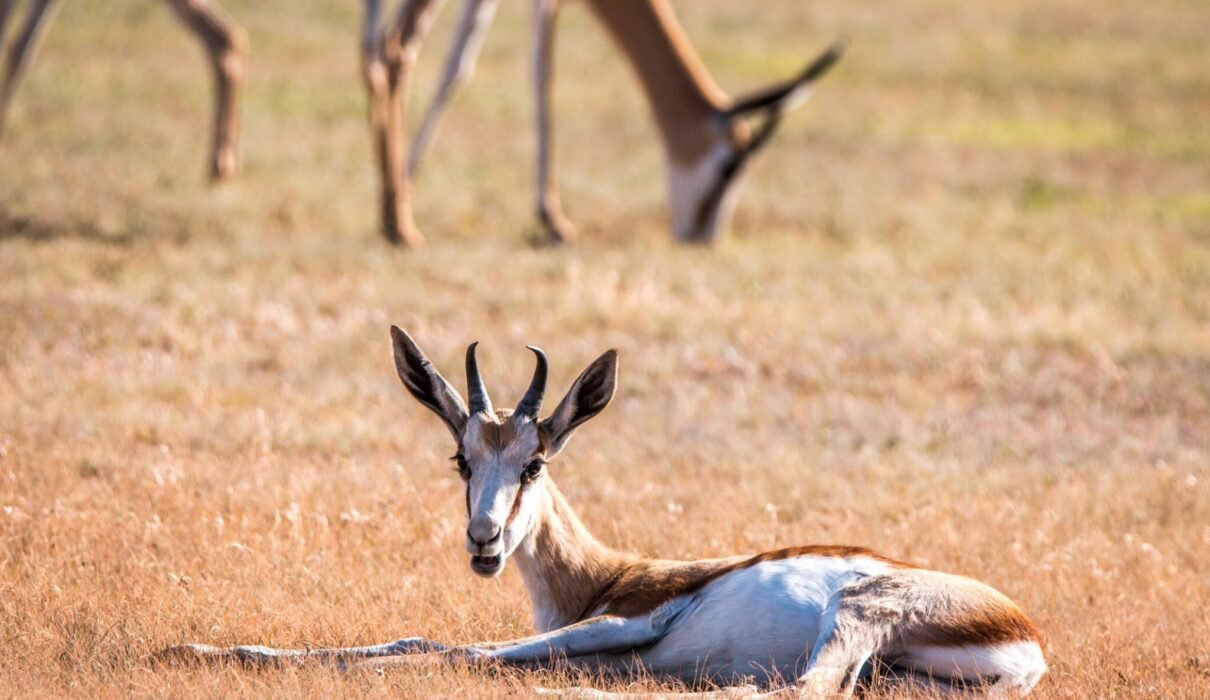How Fast Can an Antelope Run ? : Antelopes are known for their incredible speed and agility, which they use to evade predators in the wild. These swift animals are commonly found across Africa, Asia, and parts of North America, and each species has unique adaptations that allow them to run at impressive speeds. So, how fast can an antelope run, and what helps them reach such velocities? In this article, we’ll break down the running abilities of some of the fastest antelopes and explore how their bodies are designed for survival.

How Fast Can an Antelope Run ? : What Makes Antelopes So Fast?
Antelopes belong to a diverse family of herbivorous mammals called Bovidae, which also includes gazelles, wildebeests, and impalas. Their speed is essential for escaping predators like lions, cheetahs, and hyenas. Several factors contribute to the antelope’s remarkable running ability:
- Lightweight bodies: Antelopes have lean, muscular builds that reduce resistance and help them run swiftly.
- Strong legs: Their long, slender legs allow for powerful strides, enabling them to cover large distances quickly.
- Elastic tendons: The tendons in their legs store energy, allowing antelopes to spring forward with each stride.
Learn more about the biomechanics of fast-running animals.
How Fast Can an Antelope Run ? : Fastest Antelope Species and Their Speeds
Different species of antelope have varying top speeds. Some of the fastest antelopes can match or even outrun predators over short distances, while others rely on stamina to escape.
Common Antelope Species and Their Running Speeds
- Thomson’s Gazelle: One of the fastest antelope species, the Thomson’s gazelle can reach speeds of up to 50-60 miles per hour (80-96 km/h). Their incredible speed and zigzagging movements help them dodge predators in open savannas.
- Springbok: The springbok is known for its speed and agility, reaching up to 55 miles per hour (88 km/h). It can also leap vertically in a behavior called “pronking,” which may confuse predators.
- Impala: Impalas can run at speeds of around 50 miles per hour (80 km/h), often using high jumps to escape danger. Their ability to change direction rapidly makes them hard targets for predators.
- Blackbuck: Found in the grasslands of India, the blackbuck is capable of speeds up to 50 miles per hour (80 km/h), making it one of the fastest land animals in Asia.
- Wildebeest: Although not as fast as some smaller antelopes, wildebeests can still reach speeds of 40-50 miles per hour (64-80 km/h), which helps them escape predators during their famous migrations across Africa.
Learn more about the fastest land animals and how they compare.
How Fast Can an Antelope Run ? : How Antelopes Use Their Speed for Survival
Speed is not just about outrunning predators; it’s about survival strategy. Many antelopes live in open plains and savannas, where they are constantly exposed to carnivorous hunters like lions and cheetahs. To stay alive, antelopes have evolved to be fast, agile, and highly alert.
Evading Predators with Agility
While speed is crucial, an antelope’s agility is equally important for avoiding predators. Many species use zigzagging or erratic running patterns to throw off predators that rely on straight-line speed, such as cheetahs. This unpredictability gives them an extra edge in the chase.
Group Behavior and Safety in Numbers
Antelopes often live in herds, and running in large groups adds another layer of protection. Predators can become confused or overwhelmed by the sheer number of fleeing animals, making it harder for them to focus on a single target.
Read more about herd behavior and predator avoidance in antelopes.
How Fast Can an Antelope Run : How Antelopes Compare to Predators
Although antelopes are fast, they are not always the fastest animals in their ecosystem. Predators such as cheetahs can reach speeds of 60-70 miles per hour (96-112 km/h), which makes them the fastest land animals. However, cheetahs can only maintain these speeds for short bursts of around 20-30 seconds due to the intense energy required.
In contrast, antelopes have better stamina and can maintain high speeds over longer distances. This endurance gives them a better chance of escaping predators that tire quickly after sprinting.
Explore how cheetahs and other predators use speed in the wild.
How Fast Can an Antelope Run ? : The Role of Speed in the Great Migration
Speed and endurance are particularly important during the Great Migration, an annual event where millions of wildebeests, zebras, and antelopes move across the Serengeti and Maasai Mara in search of fresh grazing lands. During this journey, antelopes and other herbivores must outrun and evade predators like lions, leopards, and crocodiles.
The long distances covered during the migration require more than just speed. Animals must also have the stamina to travel for days, making speed and endurance key to their survival.
Learn more about the Great Migration and its impact on wildlife.
How Fast Can an Antelope Run ? : How to Witness Antelopes in the Wild
For wildlife enthusiasts and safari-goers, witnessing antelopes in their natural habitat is an exciting experience. The best way to see these incredible animals is on a safari in East Africa, particularly in countries like Tanzania and Kenya.
- Serengeti National Park: Home to a variety of antelope species, including wildebeests, gazelles, and impalas, the Serengeti is one of the best places to witness these animals in action.
- Ngorongoro Crater: This UNESCO World Heritage site offers a unique opportunity to see large herds of antelopes and other wildlife in a contained environment.
For a well-planned safari experience, consider booking with Eddy Tours & Safaris, which offers expert-guided tours to Tanzania’s best wildlife destinations.
Learn more about the best places to see antelopes in Africa.
How Fast Can an Antelope Run ? : Combine Your Safari with a Kilimanjaro Trek
If you’re looking for a more adventurous experience, you can combine a wildlife safari with a Mount Kilimanjaro trek. This gives you the chance to not only see antelopes and other wildlife but also challenge yourself with a trek to Africa’s highest peak.
For those interested in climbing Kilimanjaro, Kilimanjaro Climb Specialist offers personalized trekking packages that can be combined with a safari for a well-rounded Tanzanian adventure.
Learn more about combining Kilimanjaro trekking with wildlife safaris.

How Fast Can an Antelope Run ? : Conclusion
Antelopes are among the fastest animals on land, using their speed and agility to escape predators and survive in some of the most challenging environments. From the impressive sprints of the Thomson’s gazelle to the endurance of the wildebeest, these animals are built for speed. Whether you’re interested in seeing them on a safari or learning more about their survival strategies, antelopes remain one of the most fascinating species in the wild.
For more information on safari packages or Kilimanjaro trekking, visit Kilimanjaro Climb Specialist or Eddy Tours & Safaris.

